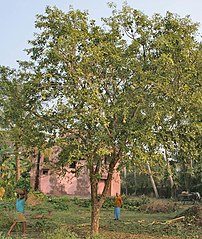[amazon_link asins=’B00HME4N8M,B00KPSXUB8,B00I5S7LOM,B00K5WIM5I,B00QJDP8TK,B01CSVOBNA,B00K5WIUK0,B00DOJ8IA8,B01IW56WM4′ template=’ProductCarousel’ store=’finmeacur-20′ marketplace=’US’ link_id=’2ecc9b55-906f-11e7-a57e-ff18b066ffee’]
Botanical Name:Allium drummondii
Family : Alliaceae
Genus :Allium
Kingdom: Plantae
Order: Asparagales
Species: A. drummondii
Synonyms : Allium nuttallii – S.Watson.
Common Names: Prairie Onion, Drummond’s onion, Wild garlic .
Habitat :Native to N. America – Texas to New Mexico, north to Nebraska. It grows on the Ssndy or gravelly, often limestone soils on dry prairies and hills .
Description:
It is perennial plant. Bulb growing to 0.25m. Drummond Onion is an upright to somewhat sprawling plant reaching 4-12 inches in height. Flowering stems and leaves form clusters of small bulbs, which are covered with fine mesh like netting. Flower color ranges from white to purple-red. This plant grows in calcareous or limestone soils of plains, prairies, and along hills and slopes. Drummond Onion is considered edible and good tasting. .
YOU MAY CLICK TO SEE THE PICTURE.………Allium Drummondii……..Drummond’s onion
It is hardy to zone 7. The lovely white flowers come into bloom April through May coming in a variety of colors ranging from white to pink. Seemingly a rather nice flowering species, Allium drummondii is quite an invasive fellow. Seemingly a rather nice flowering species, Allium drummondii is quite an invasive fellow. The flowers are hermaphrodite (have both male and female organs) and are pollinated by Bees, insects.
The plant prefers light (sandy) and medium (loamy) soils and requires well-drained soil. The plant prefers acid, neutral and basic (alkaline) soils. It cannot grow in the shade. It requires moist soil.
Cultivation :
Prefers a sunny position in a light well-drained soil. Succeeds in the rock garden, though in cold wet areas it is best grown in a bulb frame or cold greenhouse. The bulbs should be planted fairly deeply. Most members of this genus are intolerant of competition from other growing plants. The plants are much liked by grazing animals and have become rare or absent on pasture land. Grows well with most plants, especially roses, carrots, beet and chamomile, but it inhibits the growth of legumes. This plant is a bad companion for alfalfa, each species negatively affecting the other. Members of this genus are rarely if ever troubled by browsing deer.
Propagation:
Seed – sow spring in a cold frame. Prick out the seedlings into individual pots when they are large enough to handle – if you want to produce clumps more quickly then put three plants in each pot. Grow them on in the greenhouse for at least their first winter and plant them out into their permanent positions in spring once they are growing vigorously and are large enough. Division in spring. The plants divide successfully at any time in the growing season, pot up the divisions in a cold frame or greenhouse until they are growing well and then plant them out into their permanent positions.
Edible Uses:
Edible Parts: Flowers; Leaves; Root.
Bulb – raw or cooked. Used mainly as a condiment, the bulb is also eaten as a vegetable. The bulb is rather small, up to 25mm tall and 15mm in diameter. Leaves – raw or cooked. Flowers – raw. Used as a garnish on salads.
This species of Allium is gathered by Natives for its small edible bulbs. Drummond’s Onion contains a considerable amount of inulin, a non-reducing sugar that humans cannot digest. Because of this, these onions must be heated for a long period of time in order to convert the inulin into digestible sugars. Tribes of the Texas and New Mexico area used the onion as an addition to meat dishes, whereas some tribes in California often used it as a main dish.
Medicinal Uses:
Although no specific mention of medicinal uses has been seen for this species, members of this genus are in general very healthy additions to the diet. They contain sulphur compounds (which give them their onion flavour) and when added to the diet on a regular basis they help reduce blood cholesterol levels, act as a tonic to the digestive system and also tonify the circulatory system.
Other Uses
Repellent.
The juice of the plant is used as a moth repellent. The whole plant is said to repel insects and moles.
Known Hazards: Although no individual reports regarding this species have been seen, there have been cases of poisoning caused by the consumption, in large quantities and by some mammals, of certain members of this genus. Dogs seem to be particularly susceptible.
Disclaimer:The information presented herein is intended for educational purposes only. Individual results may vary, and before using any supplements, it is always advisable to consult with your own health care provider.
Resources:
http://www.pfaf.org/database/plants.php?Allium+drummondii
http://en.wikipedia.org/wiki/Allium_drummondii
http://uvalde.tamu.edu/herbarium/aldr.htm











![Reblog this post [with Zemanta]](https://i0.wp.com/img.zemanta.com/reblog_e.png?w=580)































